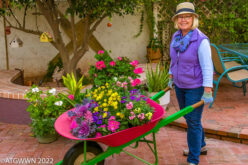Grateful for Gardeners who keep the garden alive
 November is a month for Thanksgiving and we celebrate it with a feast of food symbolizing the harvest celebration. Gardens, and those who tend them give us much to be thankful for throughout the year.
November is a month for Thanksgiving and we celebrate it with a feast of food symbolizing the harvest celebration. Gardens, and those who tend them give us much to be thankful for throughout the year.
A recent visit to the Brooklyn Botanic Garden, NY, reinforced my gratitude as I noticed the range of care provided each day to ready the public gardens for visiting.
The Brooklyn garden was founded in 1920 on 39 acres. Today it is a major cultural institution welcoming nearly a million visitors a year from all over the world. The garden offers a variety of styles and plant collections, providing plenty to see whenever you visit.
Visiting just days after Hurricane Irene, there were signs of damage in the leaves and trees from this major storm. One might think a garden would not be worth visiting after such an event but the garden structure and the healthy plants stood visibly strong. There is a resiliency in plants and trees that allows them to spring back in the sun and rain that follows such great stress. In addition, the garden staff worked hard to clean up and diminish the damage. Pruning, raking and general tidying began immediately to ensure visitors would enjoy the garden.
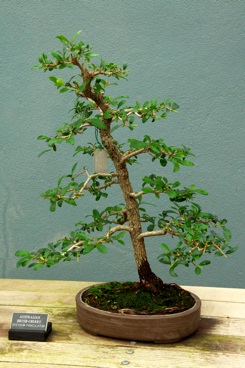
When you visit a garden and are trying to see all of the expansive grounds it is easy to lose sight of the small beauties right before you. Walking into a conservatory of bonsai immediately refocuses your eye. You canlook down on the canopy of a miniature redwood. These “trained in a tray trees” provide a different view and a total delight!
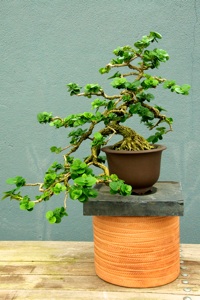
I am so grateful for gardeners with the knowledge, dedication and skill to maintain these miniature works of art. Many of the trees are over 100 years old. The Bonsai trees illustrate styles seen in nature: some trees are straight and true, (formal upright), some have weathered the storms and been pruned by nature, (informal upright), some cascade down, as if swooping over a cliff. The Bonsai also represent hardwoods, softwoods, tropical and warm climate trees. What a challenge and responsibility to cultivate and care for miniature trees!
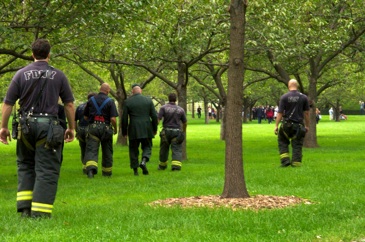
Now, along side the esplanade is a grove of Liberty Oaks planted in 2002 as a memorial to honor the victims of the 9/11 tragedy. I happened to be in that spot on Sept. 11, 2011 when firefighters, police officers and family members walked through the trees to lay a wreath of remembrance at the entrance to this memorial grove. The oaks have been growing for 10 years and they are straight and tall. In the fall when their leaves begin to turn, there is a different kind of seasonal beauty.
Throughout history when our souls are wounded and words fail us we often turn to nature for solace. We consecrate a space and we plant trees. The influence of the trees encourages reverence and allows a space for silence. The somber adults gathered in this large group stood quiet and respectful.
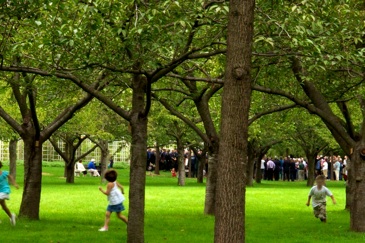
However the little children, too young to have known what happened on that awful day, ran in the grass, turned in circles, leaned upon the tree trunks and played while waiting for the service to be over. For the little ones, nature brought joy into the moment. Nature creates a sense of wonder but gardeners who plant the trees and maintain the space give all who visit the opportunity to find inspiration.
There is much to be grateful for in our gardens, both outside our own door and in our shared public spaces. The Brooklyn Botanical Garden is a spectacular garden whether you have a day or an hour to spend. Other visitors will discover different delights than I did on this visit, yet what we rarely see is the dedicated gardeners that each day care for these beautiful and significant places. For this, let us give thanks.
Originally published in Roots & Shoots, Maricopa County Master Gardener Newsletter.
@http://cals.arizona.edu/maricopa/garden/mgcentral/uploads/Nov11.pdf
